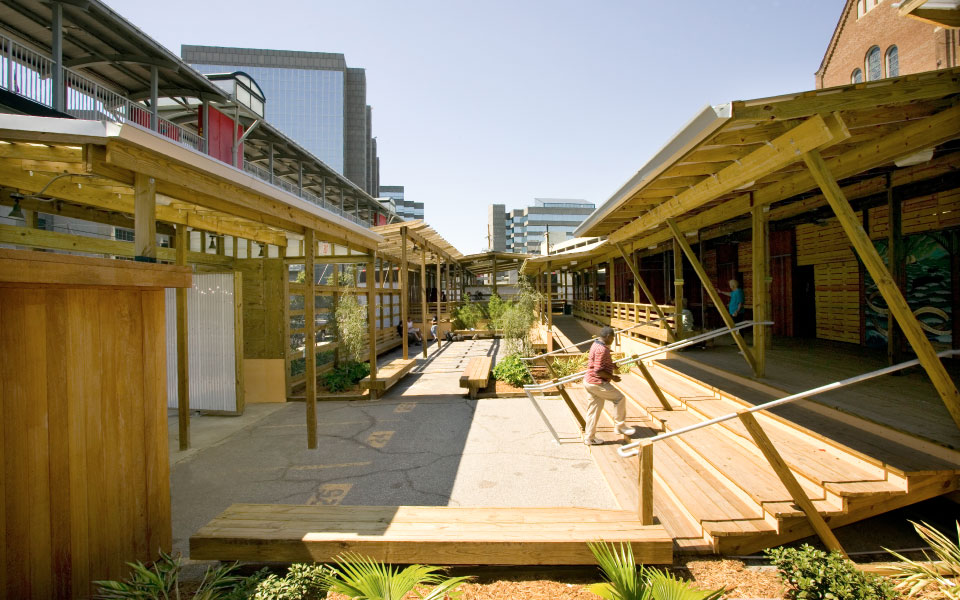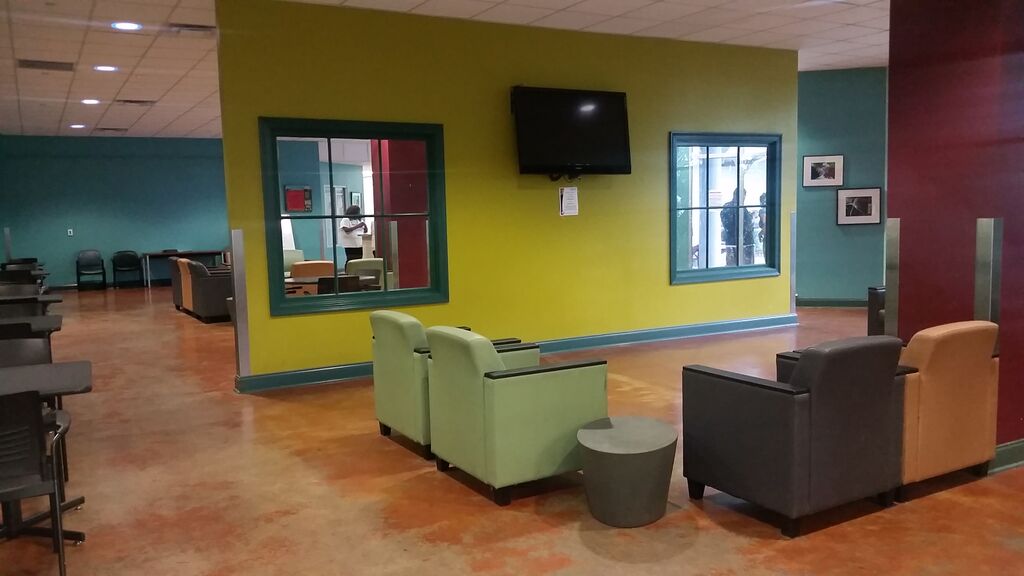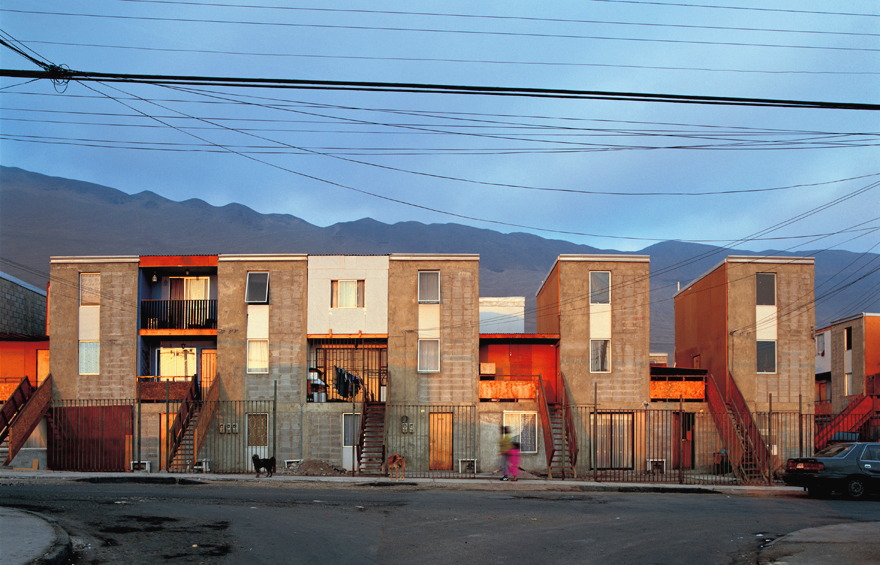[ID:1990] Safe Place: Designers Learning from the Informal Community Developments and Personal Desires of Homeless IndividualsUnited States Walking down the narrow and dimly lit hallway, I was puzzled by the silent expressions on the faces of my mom, grandma, aunt and uncle. This routine was normal. We drove four or more hours into Texas, checked into a hotel room, and waited until it was okay to go back home. This time, however, the mood was different. No plans were being made for the restaurant that we would try that night or who would be the first to get into the pool. Just silence. As my uncle opened the entry door to our conjoined hotel rooms, my grandma exclaimed, “Have you spoke to them yet? Where are they?” This wasn’t the first time some of my family decided to stay behind, since the last severe storm to hit New Orleans was Hurricane Betsy in 1965. Nonetheless, it was causing an uproar between all of the adults. Yelling, panic and tears filled the room, as my siblings, cousins and I confusingly stared at the commotion. Then, a report from Anderson Cooper flashed across the television; quieting the entire room. Images of the familiar street signs, neighborhood supermarkets and parks that I used to play at were being undertaken by flood water. People screaming from rooftops and dead bodies floating nearby resurfaced repeatedly across the screen. What was happening to my city? The people. The love. The memories. It wasn’t until that moment that I understood. I couldn’t go back home.
During the aftermath of Hurricane Katrina in 2005, the entire city of New Orleans was placed in a state of homelessness. This left many residents, including myself, displaced and without permanent shelter in areas across the United States. The fear of safety, societal abandonment, and the uncertainty of having adequate resources loomed immensely as my family, and thousands of others, dwelled in the Houston Astro Dome and other provisional shelter spaces for weeks on end. Following recovery efforts, New Orleanians returned to the city to reconstruct their homes and communities. However, this proved to be a much greater challenge for the economically vulnerable. Approximately 11,600 residents were reported to be homeless in 2007 (1); revealing that for some, the recovery process would be more difficult than the storm itself. New Orleans has made continuous strides to decrease this number over the years; ending veteran homelessness as of January 2015 (2). Yet, currently an estimated 1,981 residents remain homeless (3). Shelters and transitional/permanent housing programs have been the main contributors in addressing the immediate need of sheltering homeless populations. However, providing shelter alone does not address the comprehensive set of social, cultural, economic, and psychological needs of someone who has been or is experiencing homelessness. In order to fully address this humanitarian crisis, a participatory design process amongst designers, community organizers, members, and homeless individuals is needed, which will develop viable solutions that not only provide shelter to those in need, but promote self-reliance and independence.
In December of 2013, I was honored to become the first LSU Architecture student in the McNair Research Scholars Program. Through this opportunity, I challenged myself to explore ways to move beyond designing for the needs of high end clients and into a more egalitarian approach. I became intrigued by architect Teddy Cruz’s work involving the Tijuana-San Diego border migration patterns and how these informal communities could help rethink the way designers approach urban policy, affordable housing, and civic infrastructure. In an interview with Caleb Waldorf, creative director of Triple Canopy magazine, Cruz mentions that this approach to design suggests that “true experimental architecture can emerge from the intelligence of social networks and dynamics of informal settlements” (4). He further elaborates that “in slums and other informal spaces, there are certain procedures— social, political, and economic actions… that suggest… new economies and markets [that] can… provide models for rethinking the meanings of infrastructure and density” (5). I became thrilled at the opportunity for designers to look to informal communities to innovate sustainable modes of thinking about the built environment and providing services to those in need. From this, I began to envision how this approach could be used to provide shelter and address the crisis of homelessness in New Orleans. Hence, I developed the research question: How can designers learn from the informal community developments and personal desires of homeless individuals to imagine and create sustainable designs, which provide comfort and promote social acceptance? In my initial research, I knew that it was imperative that I first understood who made up the current homeless population of New Orleans.
During the first phase of research, I conducted interviews at the Harry Tompson Center, which was initially created in 1999 as a small parish center. After attracting homeless populations, Father Harry Tompson started ministering and providing shower facilities, laundry services, toiletries, and a place to rest for approximately 30 homeless persons per day (6). By 2005, the Center’s intake quickly increased to 275 people per day (7). However, Hurricane Katrina halted the program’s operations until it received funding to build and re-establish it’s ministry behind St. Joseph’s Church in 2007. Today, the Center continues to serve as a day shelter for homeless men, women, and children in the city.
When speaking with guests about their experiences at the Center, many referred to it as an oasis that alleviated them from some of their daily mental and physical worries. James, a Houston native that became homeless after arriving in New Orleans on a charter bus, says when it comes to the Center being a “pavilion, it [was] pretty ingenious to build it outside. The environment is very comfortable and pleasing…it’s shaded and covered… [and] the architecture is pretty nice.” Designed around a landscaped courtyard connected by six pre-fabricated trailers, most guests praised the outdoor design of the Center and the wooden benches that surround it. Individuals enjoyed the shading accommodations, natural lighting, scenery, outdoor fountain where they can wash clothes, social interactions and the convenient eating areas that the space provides. For this sample of individuals, the architecture made drastic improvements in their daily lives and psychological well-being. However, this wasn’t the typical experience that was encountered.
In contrast, many of the guests expressed frustrations with other shelters and resource centers within the city. Many articulated desires for better sanitation environments, private areas, access to green spaces, sufficient lighting for leisure reading, and enhanced safety measures. Additionally, they sought work centers where they could access job applications, use computer resources, and learn basic training skills that would help them actively work to better their current situations. When Archie, a native who is currently experiencing his second round of homelessness, was asked if there was a space where he felt independent, he answered that there were “some computer training courses available, but as far as using one for yourself, someone has to do it for you.” Within these interviews, many concerns developed around the idea of not feeling comfortable, but more importantly, not being self-sufficient in a space. As a result, some preferred living on the streets, which was the most surprising response given that these resources were intended to deliver a level of satisfaction that the streets could not.
During the second phase of research, I spoke with Wayne Troyer, the architect who designed The Center and Randy Nichols, the director of the Capital Area Alliance for the Homeless’ One Stop Homeless Service Center to understand their process when designing facilities and programs for homeless individuals. Troyer said “the focus was to provide a a safe place that homeless people would feel that they could come to without any judgement or fear” and get the services they need. These guidelines were developed through planning meetings with Sister Vera Butler at the Center, which established “a way of fostering group participation to help homeless people throughout the city.” When asked about the façade of the building, Mr. Troyer says that the “large gates that… pivot [create] a threshold that… gives this…sense… that [it’s an] extension of the streets.” Referencing the shelters, he adds, “you’re not going through a door and into an 8-foot ceiling room with acoustical tile ceilings… you’re going into this environment that is all open and connected.” For the wooden bench portion of the project, which was overwhelmingly the individuals’ favorite part about the Center, Mr. Troyer says that with the known element that unsheltered homeless people are outside a large portion of the time, it was only fitting to design a space with a lot of outside access. He continued, saying that there are landscaped areas on the exterior and interior, which are contained for safety purposes, but it is still very permeable so that people can feel that they can come and go during the operational hours.
Similarly, Nichols, says that the Drop-In Center of their building serves as a “comfortable place for [individuals] to sit and lobby.” He adds, one side has a TV for leisure purposes, while the other does not; encouraging quieter activities. When asked about Mr. Nichols’ direct involvement in the design of the newer building, he said that he met with the architect once a month for a year to speak about their aspirations for the project. The details discussed included how a “person would come in and receive services so [they] created this service desk, which is the entry point.” Some of the guidelines considered were for “multiple service providers to be able to provide services in one site and people to be able to interact with them.” With this desire, paraphrasing, Nichols knew that they needed a place for people relax in between being seen by the different service providers, and a way for things to flow in the building for providers to be able to interact with the clients. Through this, there was a lot of discussion with the architect where they addressed the questions of, “[When a] client comes in the first time, what do they do first? What do they do second? What are they going to want to do? How do they navigate?” When asked how does he think that the design criteria that has been developed around the One Stop Service Center’s building and programs could be applied to other programs or designs for the homeless, Nichols says that it is important to pay attention “to public space and communal space because… homeless clients who live alone…have a great need to socialize.” Both, Troyer and Nichols understand that using collaborative design efforts to create facilities and programs for homeless individuals that promote personal development and opportunities for advancements in society is one of the first crucial steps to social change.
In reviewing the effectiveness of Wayne Troyer and Randy Nichols’ work, it was apparent that their facility and program were intended to meet the needs of the homeless communities through a collaborative design effort that promoted safety, emotional well-being, and comfort. However, this approach lacked in providing individuals with the ability to be self-sustaining members of the community, which was their ultimate desire. As Chilean architect Alejandro Aravena states in his TEDx lecture regarding his project 93 Incremental Houses Complex, “the purpose of design, trying to understand and trying to give an answer to the "3S" menace, scale, speed, and scarcity, is to channel people's own building capacity” (8). In this project, Aravena engaged in a participatory design process that wasn’t only informative of the community’s needs, but allowed one hundred low income families the ability to receive a thirty-six square meter half home that could be expanded upon in the coming years. As a professional, I see this strategy being used as a way to provide shelter to those in need in New Orleans. By creating workshops and training opportunities that allowed individuals to learn how to build, not only will shelter be provided, but employable skill sets that could foster independence and self-reliance. As Teddy Cruz states, “housing can be more than shelter; in conditions of poverty, it must be connected to micro-infrastructures and socioeconomic support systems. Housing can even be a neighborhood economic engine; it can be a site for the production of new social and cultural relations spawned by pedagogical programming carried out at the scale of the community” (9).
Participatory design efforts prove greatly effective in addressing the inclusive needs of homeless individuals. If the true purpose of architecture is to improve a person’s well-being, it is my duty as a professional and researcher to engage in a collaborative creative process that seeks to find solutions for the disenfranchised. My role as a designer is to not only deem the economically privileged as worthy of quality design, but to challenge the traditional responsibilities of designing and constructing buildings and address the needs of those less fortunate. For this reason, there hasn’t been a better time for designers to integrate the desires, needs and ambitions of the displaced into processes that not only provide shelter for the homeless, but resources for their needs and opportunities to be self-sufficient.
As a citizen of this country, we must stop viewing the issues of the displaced as a “them” problem and start seeing it as an “us” problem. By 2030, two out of five people that live in cities are projected to be living under the poverty line, which means that demands for shelter will drastically increase effecting the political, social, and economic structures of our neighborhoods and communities (10). As a former displaced resident of New Orleans, I understand the cries of the homeless and the necessity for others to be educated on their needs. No individual should feel as though there is no chance for a better quality of life as mentioned by Ro Anthony, a sixty-one year old native who says that “when you get out homeless… you kind of deal with it.” I was blessed to receive help in the wake of Hurricane Katrina, but it is important that we not forget the millions of others that are still in need of our assistance.
A special thanks to all of the residents of New Orleans who are still fighting for peace of mind in the city we love, keep hopeful for the change that has yet to come.
References: 1-3.The U.S. Department of Housing and Urban Development OFFICE OF COMMUNITY PLANNING AND DEVELOPMENT. "PART 1 Point-in-Time Estimates of Homelessness: The 2014 Annual Homeless Assessment Report (AHAR) to Congress." HUDExchange.info. Oct. 2014. Web. Dec. 2015. 4-5,9. Cruz, Teddy. Interview by Caleb Waldorf. Learning from Tijuana: From the Graveyards of Corporate Architecture to the Informal Settlements of Latin America, n.d. Web. 28 Dec. 2015. 6-7.The Harry Tompson Center. The Harry Tompson Center, n.d. Web. 28 Dec. 2015. 8,10. Aravena, Alejandro. "My Architectural Philosophy? Bring the Community into the Process.” TEDxGlobal. Oct. 2014. Web. 31 Jan. 2016.
If you would like to contact this author, please send a request to info@berkeleyprize.org. |




